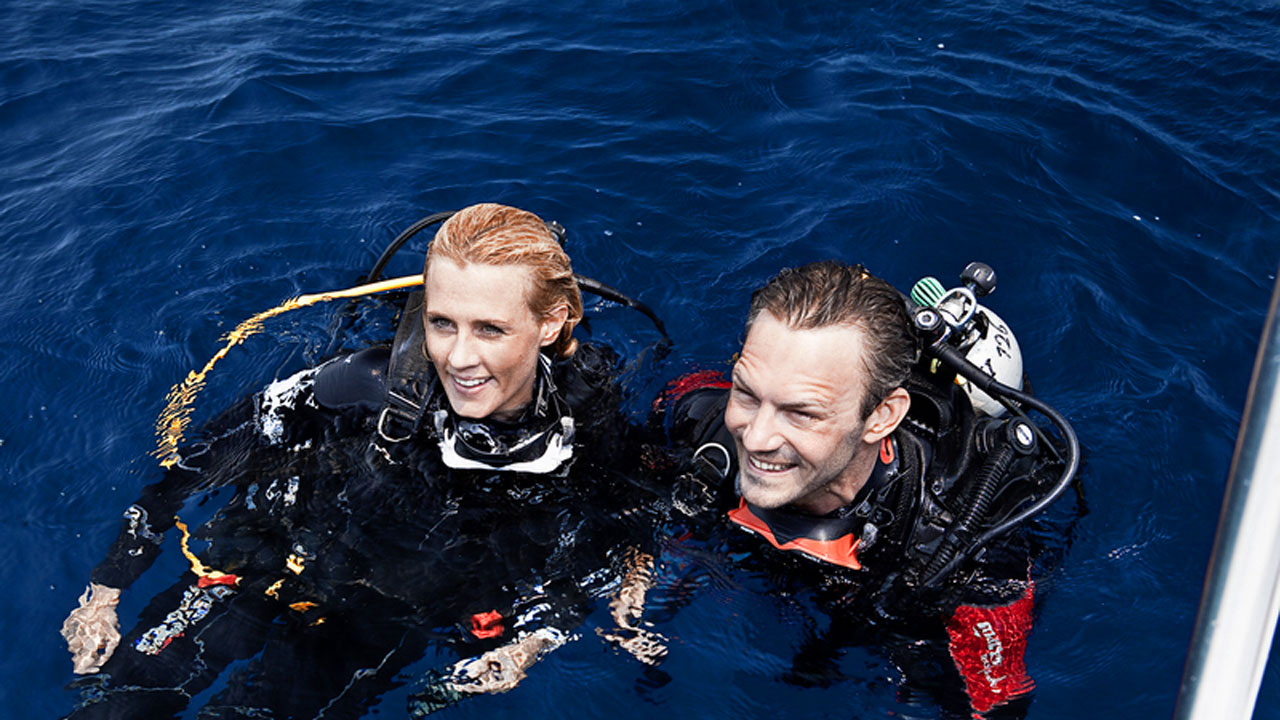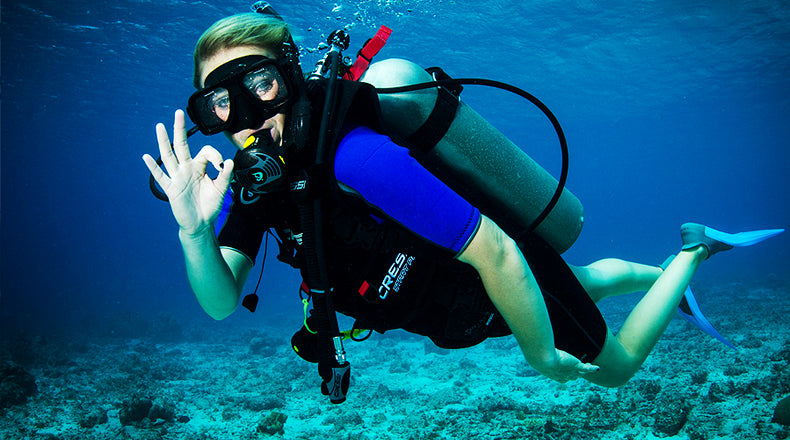Shore Diving: Planning and Gear Tips

Shore diving is one of the most underrated diving forms. Contrary to the common misconception, many fantastic dive sites can be found just off the shores. It is also not, as some people think, an activity that only novice divers would enjoy. In fact, shore diving can sometimes be more challenging and require more planning and preparation than a simple backward roll off of a boat. Despite the extra work, shore diving is very rewarding, and if you have never tried it you may be missing out big time.
Shore diving has a bunch of benefits. In particular:
- It allows you to dive on your own schedule;
- You can explore a variety of unique sites and move at your own pace;
- You don’t have to take long boat rides or worry about seasickness;
- Shore diving is cheaper and more convenient for divers on a budget;
- It generally offers more freedom and flexibility to dive when and how you want.
Preparing for the Shore Dive
The very first thing that sets shore diving apart from boat diving is the number of details and different little things you have to arrange. Chances are that if you have only dived with organized boat charters, you have never had to think about communication equipment, first-aid supplies, oxygen kit, etc. On your beach dive, however, there will be no divemasters managing the dive, or boat crew taking care of contingencies. Therefore, the preparation for your beach dive needs to start well before the planned dive day.
Get as much information about the dive site and the area around it as you can. Consult guidebooks, maps, charts, and try to get tips from local divers. Learn about the conditions at your planned site, and decide if you need any special gear. For example, if the shore is rocky and/or there are corals around the entry area, you will need to wear thick-soled dive boots and open heel fins. You should also consider wearing gloves to protect your hands in case you fall over or need to grab onto something. Check, if there are any debris or dangerous areas that should be avoided when navigating through the surf zone.
Don’t forget to look over the local tide tables to find out what is the best time to go in. Normally, you should plan your entry for slack tide - the period when the tide switches from high to low or vice versa.
What Are Tide Tables And How to Read Them
You can read more about tides and tide tables in the dedicated article
You should also lookout for the rip currents - strong isolated channels of water flowing seaward from the shore. It is best to avoid these areas, however, if you get caught in a rip current, do not fight against it. Because rip currents are pretty narrow, you can swim parallel to the beach until you escape them.
The gear set for shore diving is pretty standard. Keep in mind though, that you'll have to carry everything on your back, so going minimalistic is a good idea. While you should definitely prepare, a backup mask, an additional pair of fins, and a save-a-dive kit, all of these extra accessories and spare parts should be left on the beach. Also, make sure that everything you do take with you is securely tucked in or stuffed into the pockets, as any dangling pieces of gear will be at risk of breaking if they hit a rock or you slip.
Last but not least, remember, safety first. Be sure to write out an emergency plan with the locations and phone numbers of the closest medical facilities and recompression chambers. Before going shore diving tell somebody where you're headed and when you plan to be back. If possible, bring along a topside buddy who can watch out for the extra gear and call for help if necessary. If you arrive at the dive site and the conditions seem overwhelming, call the dive and come back another day.
Getting In
Depending on the location you choose, a shore dive entry can be a simple walk on a sandy beach or a tough climb over rocks. The height of the waves in the surf zone is also a factor to consider. So, it is important that you know the proper entry techniques for each situation. Generally, there are two ways to navigate through surf - over or under. If the waves are roughly as tall or taller than you, it would be easier to go under. You should completely deflate your BC and drop to the bottom. Once submerged, try to grab onto the bottom or dig your fingers into the sand. Allow the surf to crash over you and use the time between wave breaks to propel yourself forward by crawling, pulling, or kicking.
If the waves are smaller, you can usually just walk into the surf. In this case you can either put your fins on before going in and move tank-first into deeper water, or wade out a bit and then strap your fins on. Either way you need to have your BC inflated and try to walk between wave breaks. When you see the new swell approaching, stop and hop as it hits you. This will help you float up over the crest. Once you're deep enough that you can't touch the bottom, surface swim past the surf zone and start your dive.
When getting in, don’t forget to find a reference point on shore. Choose a large stationary object on the beach, such as a building or a tree. This visual reference will help you stay on course on the way there and find your entry point on the way back.
Getting Out
Unless the surf is extremely heavy, the easiest way to return to the beach is by swimming underwater. To accomplish this, become negatively buoyant and kick with the waves all the way to the shore’s edge. Don’t forget to leave enough air for your exit swim. The harsher the conditions, the more air you need to save.
Exit the water by crawling on your hands and knees and only then remove your fins. Otherwise, you risk to fall face down while trying to stand up in the surf zone.
Useful Tips for Better Shore Diving
- Gear up at your car or bring a tarp to stand on. This will allow you to keep sand away from your gear.
- Take several jugs of rinse water and a plastic tub to dump your gear in after the dive.
- Once past the surf, surface swim on your back. This way you will be able to keep your reference point in sight.
- Take a knife or shears in case you get entangled in fishing line or kelp.
- Keep in mind that the visibility is always lower close to the shore.





